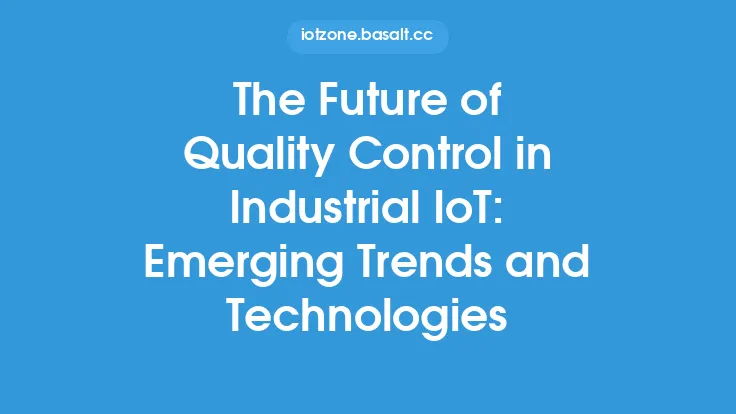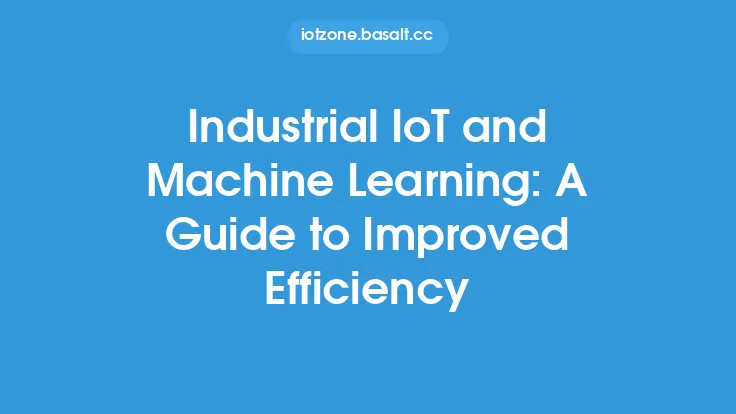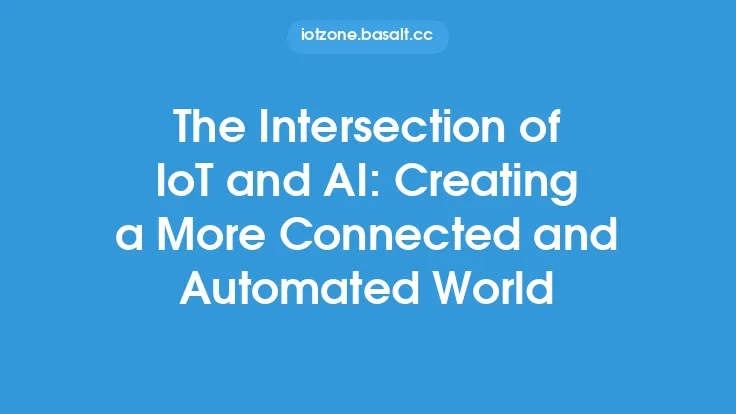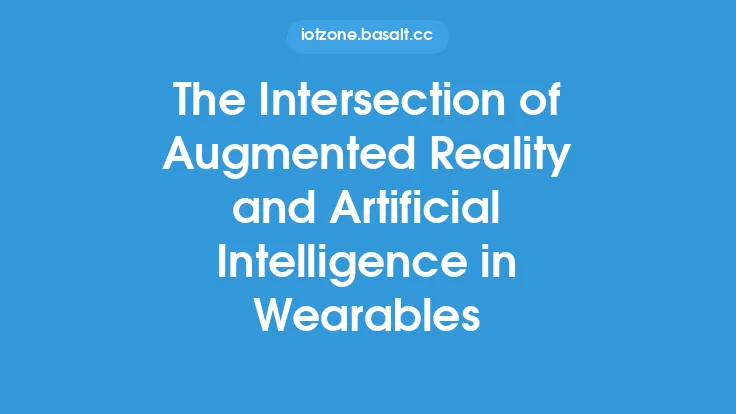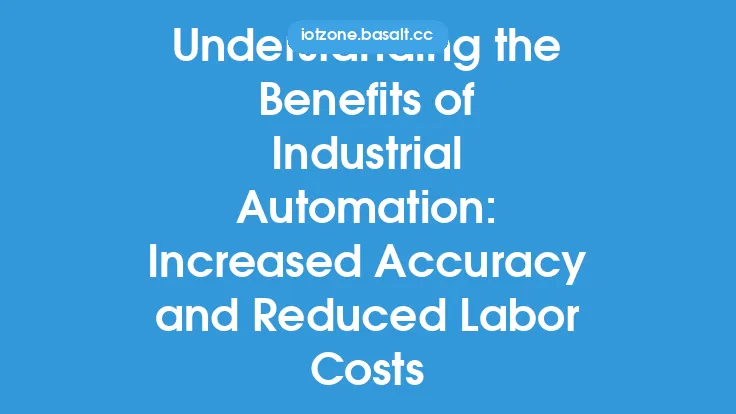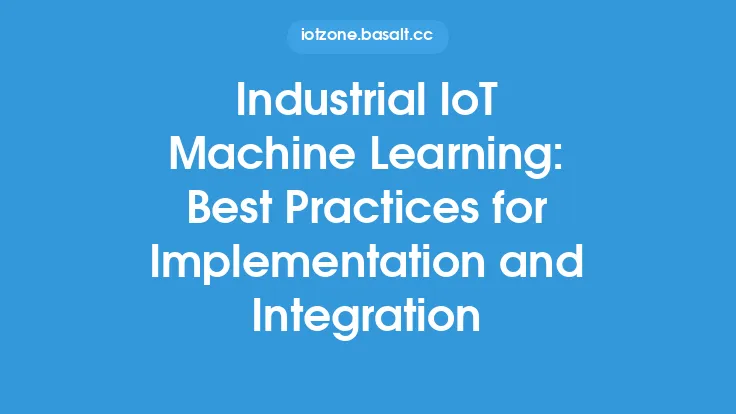The convergence of machine learning and Industrial Internet of Things (IIoT) has given rise to a new era of industrial automation, where machines and devices can learn from data, make decisions, and take actions autonomously. This intersection of technologies has the potential to revolutionize the way industries operate, making them more efficient, productive, and competitive. In this article, we will delve into the key concepts and technologies that underpin the intersection of machine learning and IIoT.
Introduction to Machine Learning
Machine learning is a subset of artificial intelligence (AI) that involves the use of algorithms and statistical models to enable machines to learn from data, without being explicitly programmed. In the context of IIoT, machine learning can be applied to various types of data, including sensor readings, equipment logs, and production data. The goal of machine learning in IIoT is to identify patterns, trends, and correlations in the data, and to use this information to make predictions, classify events, or optimize processes.
Industrial IoT Fundamentals
The Industrial Internet of Things (IIoT) refers to the network of physical devices, vehicles, buildings, and other items that are embedded with sensors, software, and connectivity, allowing them to collect and exchange data. IIoT devices can range from simple sensors and actuators to complex systems such as manufacturing equipment, robots, and drones. The data generated by these devices can be used to monitor and control industrial processes, predict maintenance needs, and optimize production workflows.
Key Technologies
Several key technologies underpin the intersection of machine learning and IIoT, including:
- Edge Computing: Edge computing refers to the processing of data at the edge of the network, i.e., close to the source of the data. This approach reduces latency, improves real-time processing, and enables faster decision-making.
- Cloud Computing: Cloud computing provides a scalable and on-demand infrastructure for processing and analyzing large amounts of IIoT data. Cloud-based machine learning platforms can be used to build, train, and deploy machine learning models.
- Big Data Analytics: Big data analytics involves the use of advanced statistical and machine learning techniques to extract insights from large and complex datasets. In the context of IIoT, big data analytics can be used to analyze sensor data, equipment logs, and production data.
- Artificial Intelligence: Artificial intelligence (AI) is a broader field that encompasses machine learning, natural language processing, and computer vision. AI can be used to build intelligent systems that can learn, reason, and interact with humans.
Machine Learning Algorithms
Several machine learning algorithms are commonly used in IIoT applications, including:
- Supervised Learning: Supervised learning involves training a machine learning model on labeled data, where the correct output is already known. Supervised learning can be used for classification, regression, and prediction tasks.
- Unsupervised Learning: Unsupervised learning involves training a machine learning model on unlabeled data, where the goal is to identify patterns, trends, and correlations. Unsupervised learning can be used for clustering, dimensionality reduction, and anomaly detection.
- Reinforcement Learning: Reinforcement learning involves training a machine learning model to make decisions based on rewards or penalties. Reinforcement learning can be used for control and optimization tasks.
Applications of Machine Learning in IIoT
Machine learning has numerous applications in IIoT, including:
- Predictive Maintenance: Predictive maintenance involves using machine learning algorithms to predict when equipment is likely to fail, allowing for proactive maintenance and reducing downtime.
- Quality Control: Quality control involves using machine learning algorithms to monitor production processes and detect defects or anomalies in real-time.
- Energy Management: Energy management involves using machine learning algorithms to optimize energy consumption and reduce waste in industrial processes.
- Supply Chain Optimization: Supply chain optimization involves using machine learning algorithms to predict demand, optimize inventory levels, and streamline logistics.
Challenges and Limitations
While the intersection of machine learning and IIoT has the potential to revolutionize industrial automation, there are several challenges and limitations that need to be addressed, including:
- Data Quality: Data quality is a critical issue in IIoT, as machine learning algorithms require high-quality data to produce accurate results.
- Security: Security is a major concern in IIoT, as connected devices and systems can be vulnerable to cyber attacks.
- Interoperability: Interoperability is a challenge in IIoT, as different devices and systems may use different communication protocols and data formats.
- Scalability: Scalability is a challenge in IIoT, as the number of connected devices and the volume of data generated can be very large.
Future Directions
The intersection of machine learning and IIoT is a rapidly evolving field, with several future directions and trends, including:
- Increased Adoption of Edge Computing: Edge computing is expected to play a larger role in IIoT, as the need for real-time processing and reduced latency becomes more critical.
- Growing Use of Cloud-Based Machine Learning Platforms: Cloud-based machine learning platforms are expected to become more popular, as they provide a scalable and on-demand infrastructure for building, training, and deploying machine learning models.
- Greater Emphasis on Security and Interoperability: Security and interoperability are expected to become more important, as the number of connected devices and the volume of data generated continue to grow.
- Increased Focus on Explainability and Transparency: Explainability and transparency are expected to become more important, as the need to understand and trust machine learning decisions becomes more critical.
